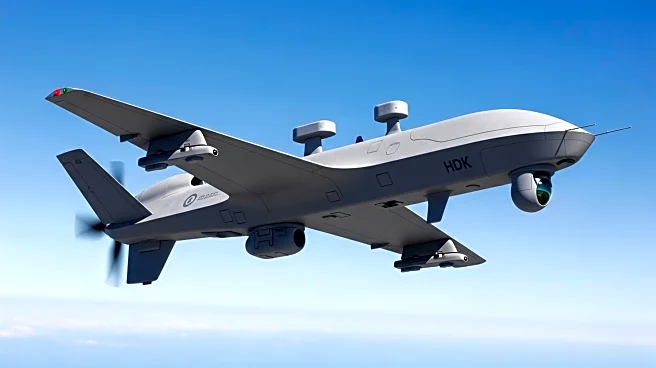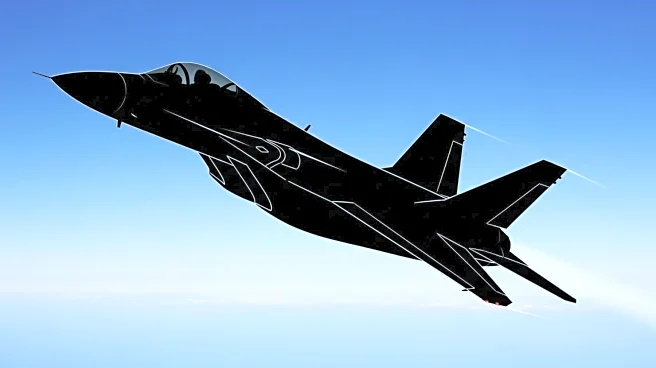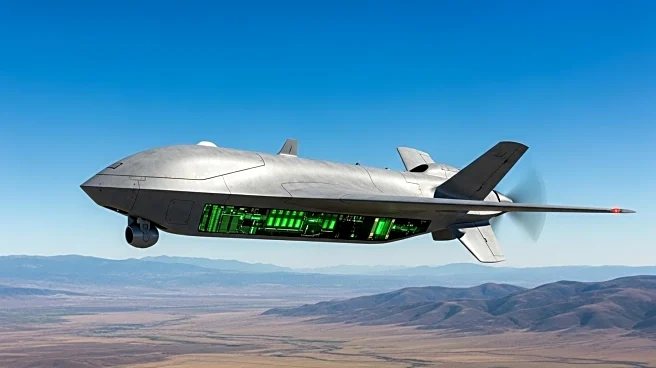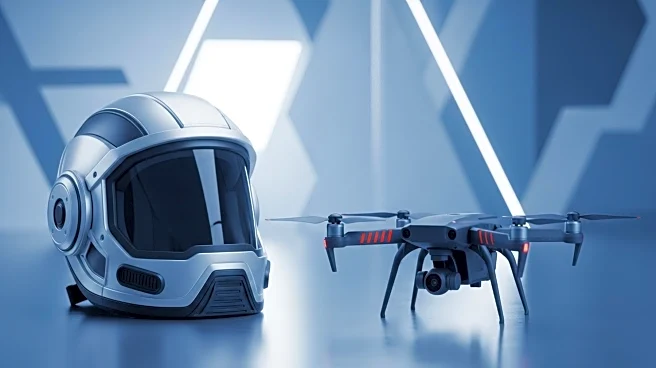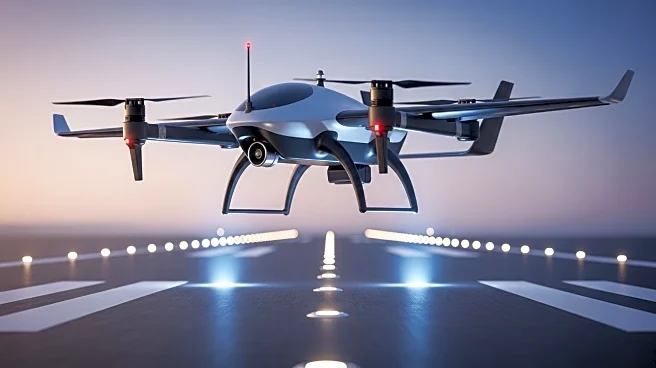What's Happening?
General Atomics has successfully conducted the first flight of its collaborative combat aircraft, the YFQ-42A, in partnership with the U.S. Air Force. The flight took place at Gray Butte Airport in California, marking a significant milestone for the program. The aircraft is based on the XQ-67A Off-Board Sensing Station drone and is part of the Air Force's efforts to enhance combat capabilities through human-machine teaming. The program has progressed rapidly from concept to flight, demonstrating the potential for innovative acquisition processes.
Why It's Important?
The successful flight of the YFQ-42A represents a major advancement in military technology, particularly in the realm of unmanned aerial systems. This development could reshape the battlespace by extending the reach and optimizing the performance of warfighters through advanced human-machine collaboration. The program's rapid progress highlights the potential for accelerated defense innovation and acquisition, which could lead to more efficient deployment of combat capabilities. The collaborative combat aircraft could play a crucial role in future air-to-air missions, providing additional support to fighter jets.
What's Next?
The YFQ-42A will undergo further testing at Edwards Air Force Base and operational assessments at Nellis Air Force Base before being integrated into the fleet. The Air Force plans to establish a CCA Air Readiness Unit at Beale Air Force Base to deploy the drones globally. A production decision is expected in fiscal 2026, with the possibility of selecting one or both prototypes from General Atomics and Anduril. The program's success could lead to expanded capabilities and increased investment in unmanned systems.
